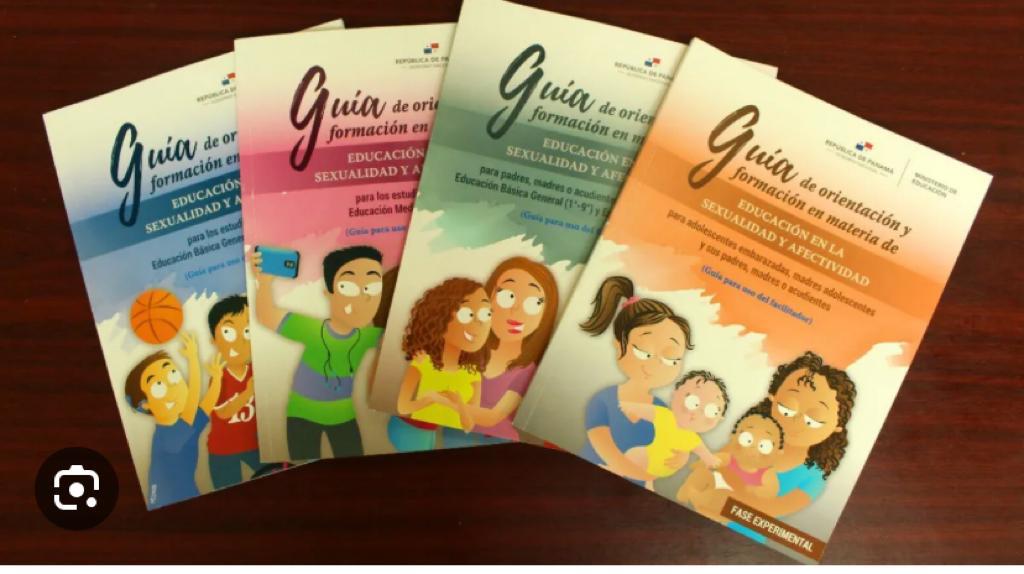FORMACIÓN EN MATERIA DE EDUCACIÓN EN SEXUALIDAD Y AFECTIVIDAD
MINISTERIO DE EDUCACIÓN
(
Government
)
#SDGAction53443
Description
Implementar programas preventivos en cuanto a Educación en la Sexualidad y Afectividad en los centros escolares, dirigidos a la formación integral de los niños, niñas y adolescentes para su bienestar y desarrollo. Las 5 guías son: 1. Guía para los estudiantes de Educación Básica General Primaria (1° - 6°). 2. Guía para los estudiantes de Educación Básica General Premedia (7° - 9°). 3. Guía para los estudiantes de Educación Media (10° - 12°). 4. Guía para adolescentes embarazadas, madres adolescentes y sus padres, madres o acudientes. 5. Guía para padres, madres o acudientes de los estudiantes de Educación Básica General (1°-9°) y Educación Media (10°-12°).
Consiste en cinco guías didácticas dirigidas al facilitador del programa de Educación en la Sexualidad y Afectividad (personal de los gabinetes psicopedagógicos, profesores de orientación, docentes y maestros), para ser implementadas con los estudiantes de educación primaria, premedia, media, adolescentes embarazadas y padres de familia.
Personal psicosocial del ministerio de Educación como equipo facilitador y docentes / maestros como implementadores de las guías en las aulas de clase.
A través de la Dirección Nacional de Servicios Psicoeducativos en articulación con las direcciones curriculares.
Existe un instrumento de monitoreo y evaluación para reconocer la cantidad de población beneficiada.
MINSA SENNIAF MIDES CAJA DE SEGURO SOCIAL INSTITUTO GORGAS
SDGS & Targets
Goal 3
Ensure healthy lives and promote well-being for all at all ages
3.1
3.1.1
Maternal mortality ratio
3.1.2
Proportion of births attended by skilled health personnel
3.2
3.2.1
Under-five mortality rate
3.2.2
Neonatal mortality rate
3.3
By 2030, end the epidemics of AIDS, tuberculosis, malaria and neglected tropical diseases and combat hepatitis, water-borne diseases and other communicable diseases
3.3.1
Number of new HIV infections per 1,000 uninfected population, by sex, age and key populations
3.3.2
Tuberculosis incidence per 100,000 population
3.3.3
Malaria incidence per 1,000 population
3.3.4
Hepatitis B incidence per 100,000 population
3.3.5
Number of people requiring interventions against neglected tropical diseases
3.4
3.4.1
Mortality rate attributed to cardiovascular disease, cancer, diabetes or chronic respiratory disease
3.4.2
Suicide mortality rate
3.5
Strengthen the prevention and treatment of substance abuse, including narcotic drug abuse and harmful use of alcohol
3.5.1
Coverage of treatment interventions (pharmacological, psychosocial and rehabilitation and aftercare services) for substance use disorders
3.5.2
Alcohol per capita consumption (aged 15 years and older) within a calendar year in litres of pure alcohol
3.6
3.6.1
Death rate due to road traffic injuries
3.7
By 2030, ensure universal access to sexual and reproductive health-care services, including for family planning, information and education, and the integration of reproductive health into national strategies and programmes
3.7.1
Proportion of women of reproductive age (aged 15-49 years) who have their need for family planning satisfied with modern methods
3.7.2
Adolescent birth rate (aged 10-14 years; aged 15-19 years) per 1,000 women in that age group
3.8
Achieve universal health coverage, including financial risk protection, access to quality essential health-care services and access to safe, effective, quality and affordable essential medicines and vaccines for all
3.8.1
Coverage of essential health services
3.8.2
Proportion of population with large household expenditures on health as a share of total household expenditure or income
3.9
3.9.1
Mortality rate attributed to household and ambient air pollution
3.9.2
Mortality rate attributed to unsafe water, unsafe sanitation and lack of hygiene (exposure to unsafe Water, Sanitation and Hygiene for All (WASH) services)
3.9.3
Mortality rate attributed to unintentional poisoning
3.a
3.a.1
Age-standardized prevalence of current tobacco use among persons aged 15 years and older
3.b
Support the research and development of vaccines and medicines for the communicable and non-communicable diseases that primarily affect developing countries, provide access to affordable essential medicines and vaccines, in accordance with the Doha Declaration on the TRIPS Agreement and Public Health, which affirms the right of developing countries to use to the full the provisions in the Agreement on Trade-Related Aspects of Intellectual Property Rights regarding flexibilities to protect public health, and, in particular, provide access to medicines for all
3.b.1
Proportion of the target population covered by all vaccines included in their national programme
3.b.2
3.b.3
Proportion of health facilities that have a core set of relevant essential medicines available and affordable on a sustainable basis
3.c
3.c.1
Health worker density and distribution
3.d
Strengthen the capacity of all countries, in particular developing countries, for early warning, risk reduction and management of national and global health risks
3.d.1
International Health Regulations (IHR) capacity and health emergency preparedness
3.d.2
Percentage of bloodstream infections due to selected antimicrobial-resistant organisms
SDG 14 targets covered
| Name | Description |
|---|
Deliverables & Timeline
Tiraje de 43,800 Guías para la Comunidad Educativa.
Entrega de las guías a todos los centros educativos a nivel nacional.
Capacitación a 535 profesionales de los equipos psicosociales del Ministerio de Educación como facilitadores.
Capacitación 3,753 docentes a nivel nacional (a la fecha)
Resources mobilized
Partnership Progress

Feedback
Action Network

Type of initiative
Timeline
Entity
SDGs
Geographical coverage
Other beneficiaries
Estudiantes de primaria, premedia, media, adolescentes embarazadas, padres y madres de familia de las escuelas seleccionadas en su primera fase.
More information
Countries

Contact Information
Director, Dirección Nacional de Servicios Psicoeducativos

